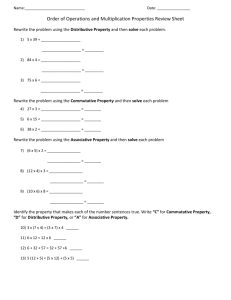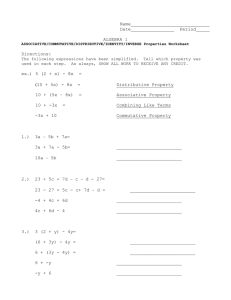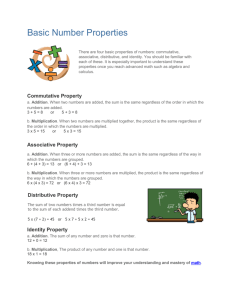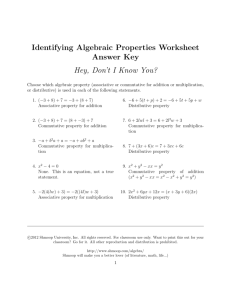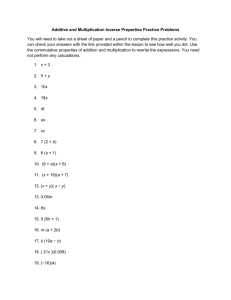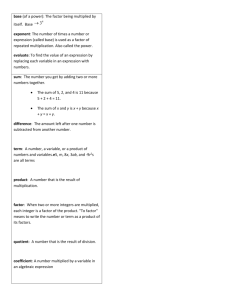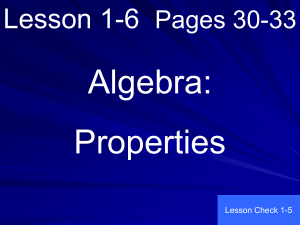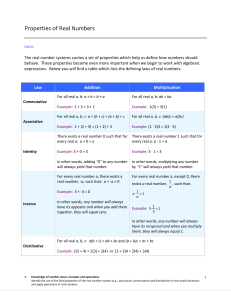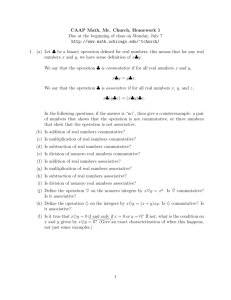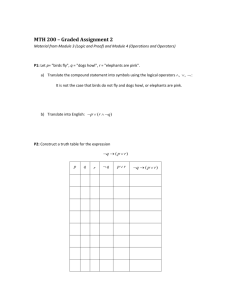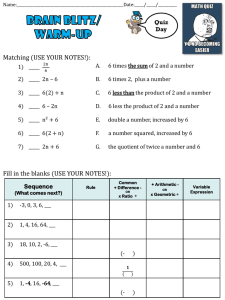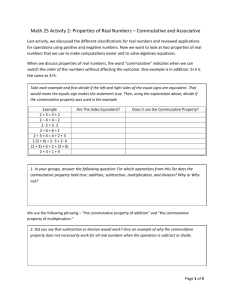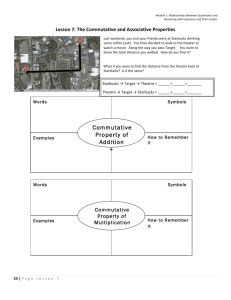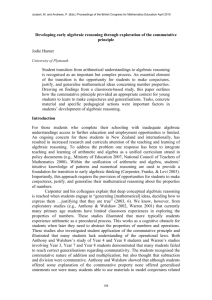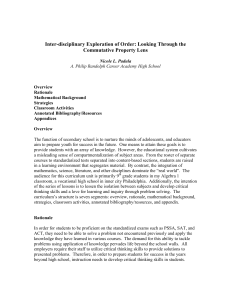Aim #6: What are the properties of real numbers? Homework: pg 18
advertisement
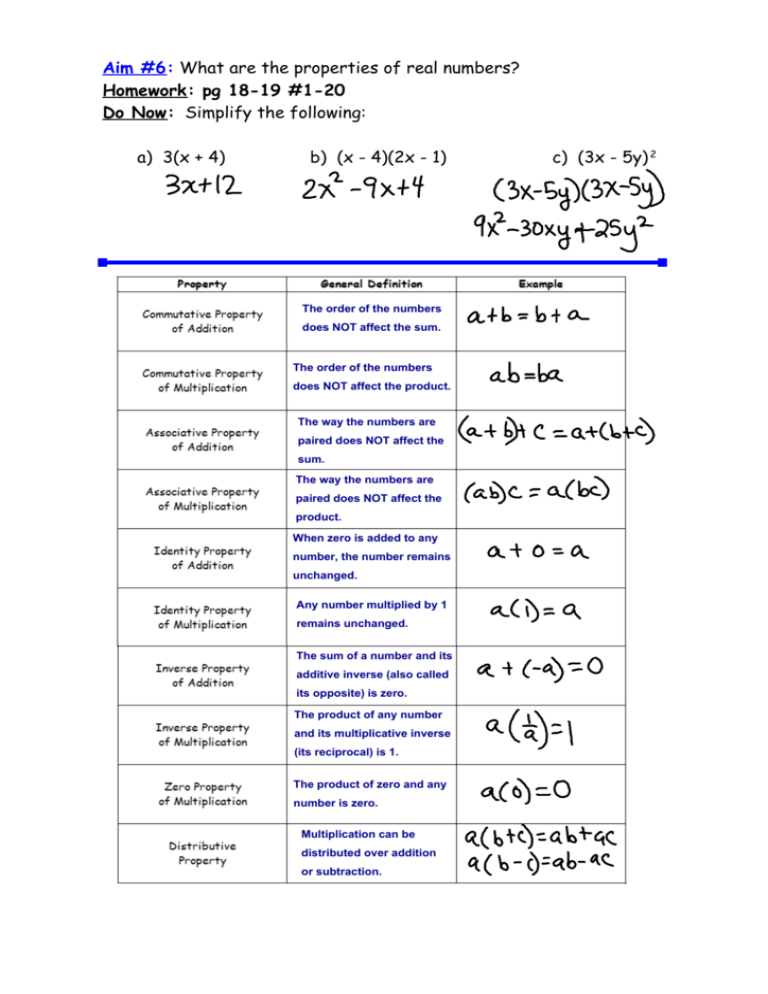
Aim #6: What are the properties of real numbers? Homework: pg 18-19 #1-20 Do Now: Simplify the following: a) 3(x + 4) b) (x - 4)(2x - 1) The order of the numbers does NOT affect the sum. The order of the numbers does NOT affect the product. The way the numbers are paired does NOT affect the sum. The way the numbers are paired does NOT affect the product. When zero is added to any number, the number remains unchanged. Any number multiplied by 1 remains unchanged. The sum of a number and its additive inverse (also called its opposite) is zero. The product of any number and its multiplicative inverse (its reciprocal) is 1. The product of zero and any number is zero. Multiplication can be distributed over addition or subtraction. c) (3x - 5y) 2 HW #5 Solutions: 1) 5) 2) 3) 6) 4) 7) 8) 9) MR: 1) a. 9x4 - 3x2 + 4x - 3 b. 9x4 c. 4 d. -3 2) 9x + 7 3) No, equals x-3, a polynomial cannot have a neg. exponent. State the property illustrated in each example. 11. (3 + 5) - 3 = (5 + 3) - 3 14. ab + cd = ab + dc 12. 15. 1a = a 17. Fill in the circles with the correct property: 13. π(0) = 0 16. 0.5(2) = 1 Use these abbreviations for the properties of real numbers and complete the flow diagram. C+ for the commutative property of addition C× for the commutative property of multiplication A+ for the associative property of addition A× for the associative property of multiplication D for distributive property Is it true for all real numbers x, y, and z that (x + y) + z should equal (z + y) + x? Lets prove that (x + y) + z = (z + y) + x using a flow diagram and the commutative and associative properties. (x + y) + z Now, show a mathematical proof of the statement that (x + y) + z = (z + y) + x are equivalent expressions: (x + y) + z z + (x + y) z + (y + x) Given _____________________________ ________________________ (z + y) + x ________________________ Sum It Up! The Distributive, Associative and Commutative Properties can be applied to algebraic expressions using variables that represent real numbers. Two algebraic expressions are equivalent if we can convert one expression into the other by repeatedly applying the Commutative, Associative, and Distributive Properties and the properties of rational exponents to components of the first expression. 9. 10. 11. 12. 13. 14. 15. 16. 17. 18. 19. 20.

